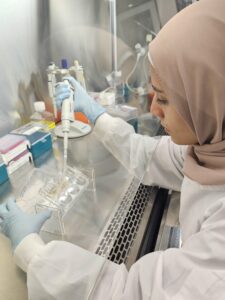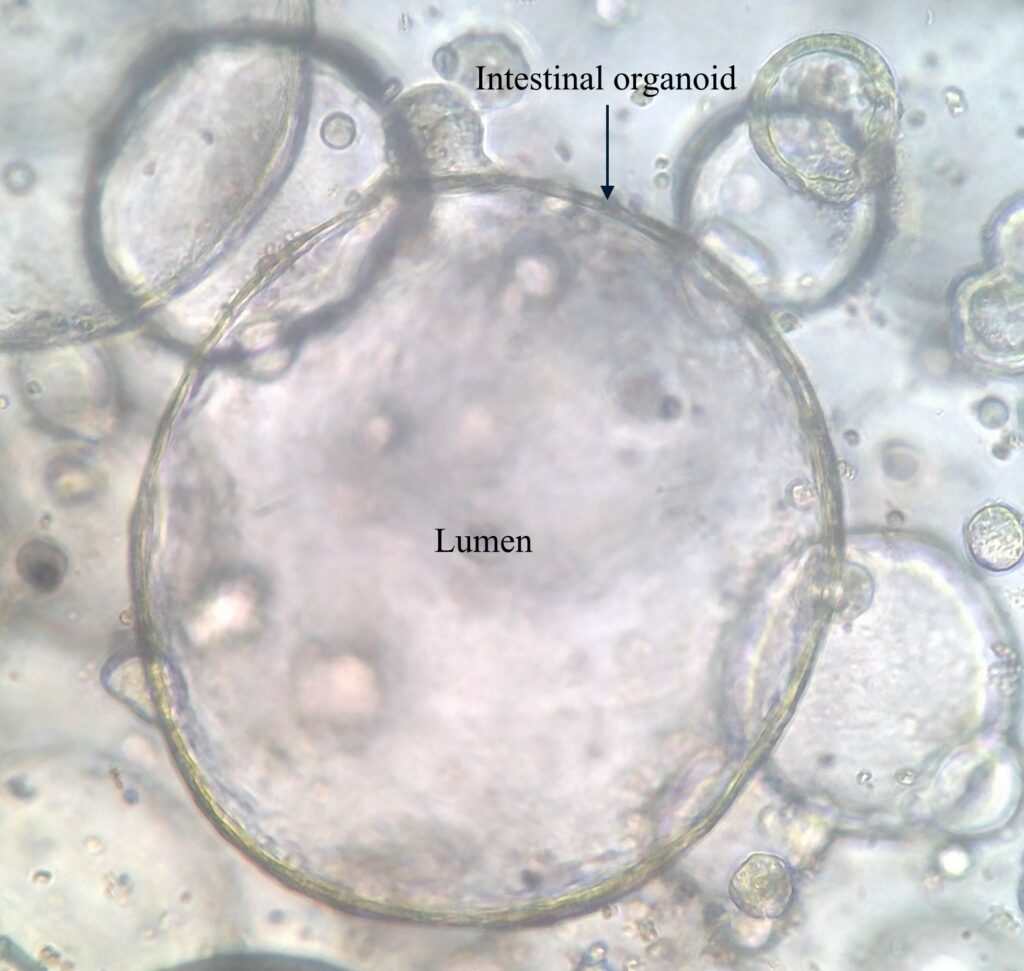Microbiome-intestinal organoid co-culture for improved gut health research.
The development of microbiome-intestinal organoid for improved understanding of human gut microbiome functions and identification of potential probiotic microbes in the human gut that could lead to health benefits.
The challenge

Dr Ghanyah Al-Qadami culturing intestinal organoids.
The human gut represents a complex ecosystem composed of trillions of microbes, known as the gut microbiome, and diverse types of intestinal cells living in a mutually beneficial relationship. Due to this complexity, studying the interactions between different microbes and intestinal cells is challenging. Current approaches to studying the human gut microbiome mainly rely on analysing the faecal microbiota composition which only describes the communities of microbes present in the gut.
However, to develop a better understanding of the gut microbiome function (what the microbes are doing and how it impacts the human host) experimental manipulation is required. This cannot be conducted on human subjects due to ethical considerations. Furthermore, bench-top experiments, such as in vitro fermentation or co-culturing microbes with a single layer of intestinal cells, lack the required accuracy as a surrogate of a complex human intestine. This limits our understanding of microbial-host interactions and the ability to develop health benefiting interventions through enhancing probiotic microbes.
Our response
We aim to establish a microbiome-intestinal organoid co-culture as a tool for studying microbe-microbe and microbe-host interactions. Organoid-microbe co-culture is a tiny, self-organised three-dimensional tissue and microbial culture that simulates the human intestine (host) and its microbiome. Intestinal organoids are derived from stem cells that retain many features of the intestinal epithelium (site where microbiome-host interactions occur), cell types, and intestinal architecture (lumen-enclosed structure with apical and basal surfaces) and therefore, can closely mimic the function of the human intestine also known as “mini gut”. To develop the co-culture system, 3D intestinal organoids will be grown from biopsy samples collected from the human colon during the routine colonoscopy procedure. Selected microbes will be then injected into the organoid’s lumen to establish gut-microbe co-culture.
Multi-omic techniques will be used to develop an understanding of the exact function of each microbe and how they modulate molecular and cellular processes, gene and protein expression, and immune responses in the different types of intestinal cells. This will enhance our understanding of how different microbes influence the gut and facilitate the development of optimal microbiome-based interventions such as the identification of next-generation probiotic microbes with human health benefits.

Microscope image of an intestinal organoid, showing the centre space of the intestinal structure (lumen).
